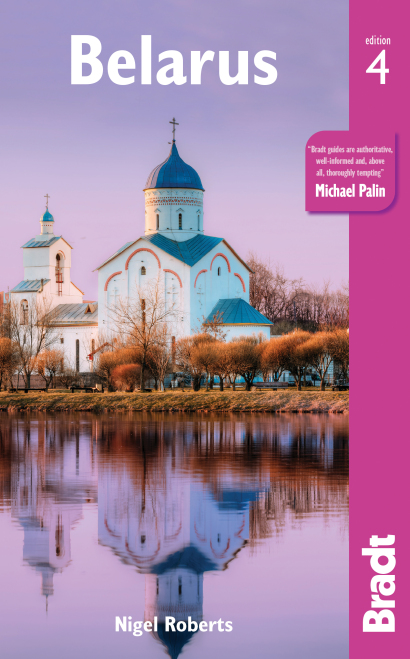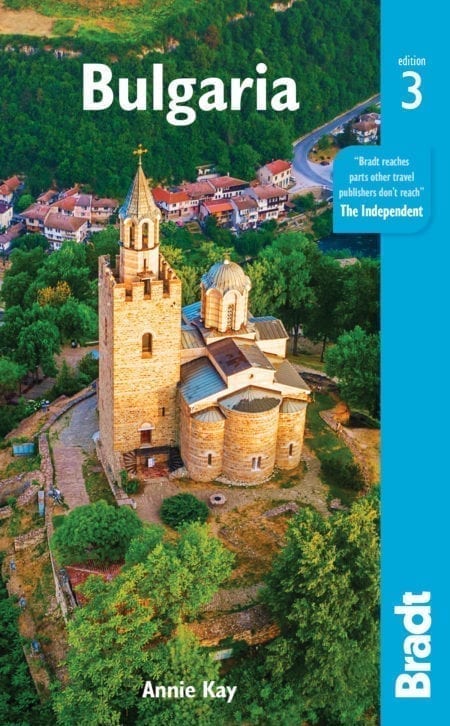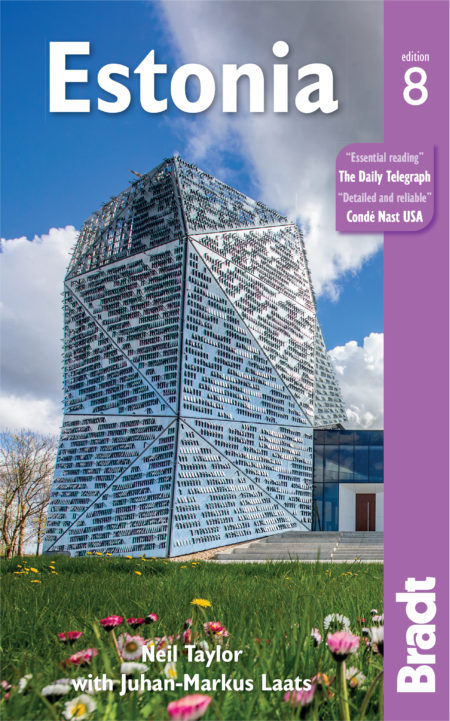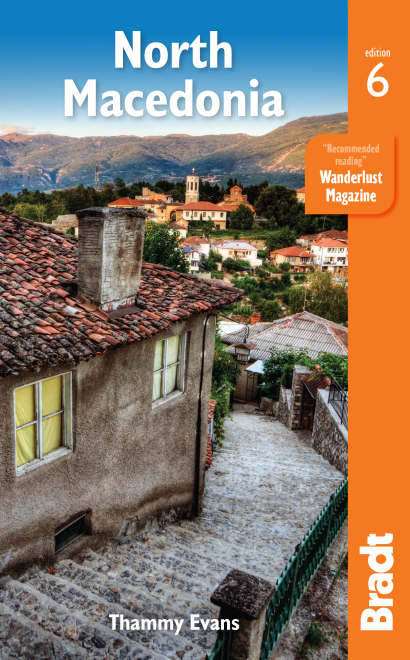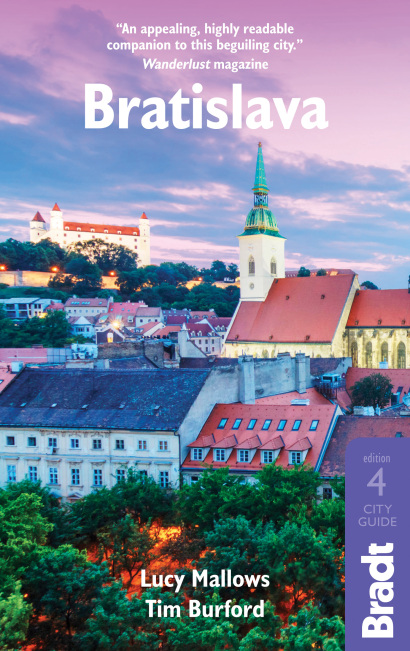Europe’s churches reflect its enormous cultural diversity and this selection attempts, one could never fully succeed, at showing a range of what that diversity looks like. All unique in their own way, these churches are amazing places to explore regional history, architectural styles and artistic treasures.
The Temple of St Sava, Belgrade, Serbia
The enormous dome of The Temple of St Sava can be seen from all over the city, gleaming through Belgrade’s haze in all directions like a beacon. Size apart, the church is undeniably a highly impressive structure: a neo-Byzantine colossus with echoes of St Sophia in Istanbul.
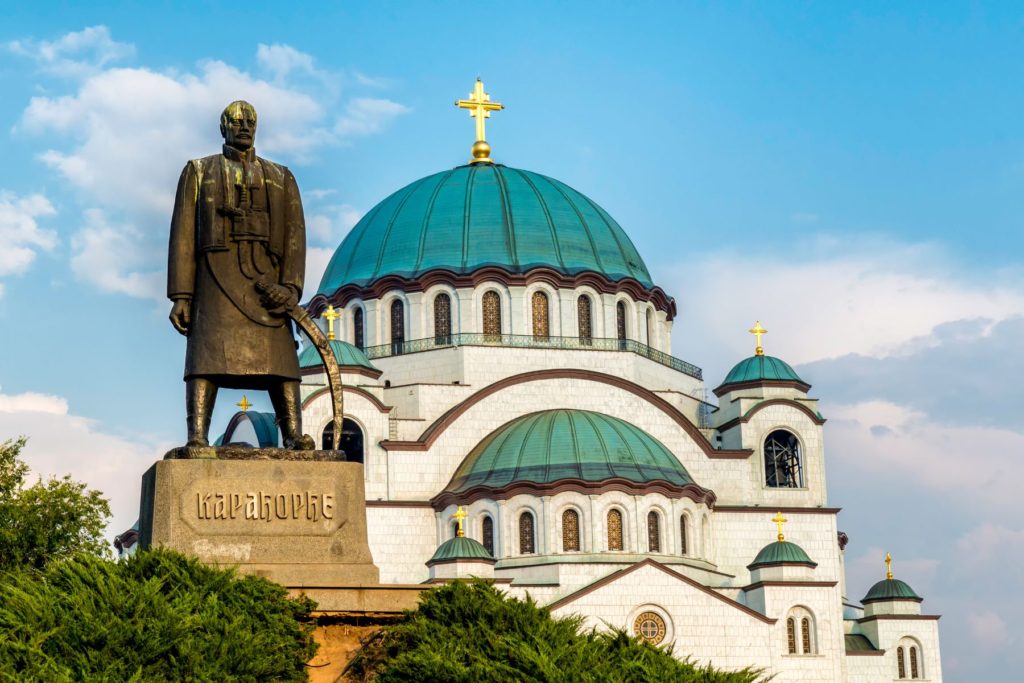
Building it was anything but straightforward: the time taken over St Sava’s construction must compare to that of cathedral-building in medieval times. Even today, some of the mosaics in the church’s interior are still unfinished, despite passing the deadline for their completion. The mosaic in the main dome, costing around €4 million, was financed by the Russian Orthodox Church.
Monastery of Treskavec, North Macedonia
Some 8km outside Prilep under the summit of the impressive Zlatovrv, this remote monastery is a magnificent old complex of significant historical and cultural value. The monastery is built on the ancient town of Kolobaise, which existed from the 3rd century BC until the 7th century AD and whose name is written in a long inscription cut into a stone used as the base of the cross on top of the central dome of the church.
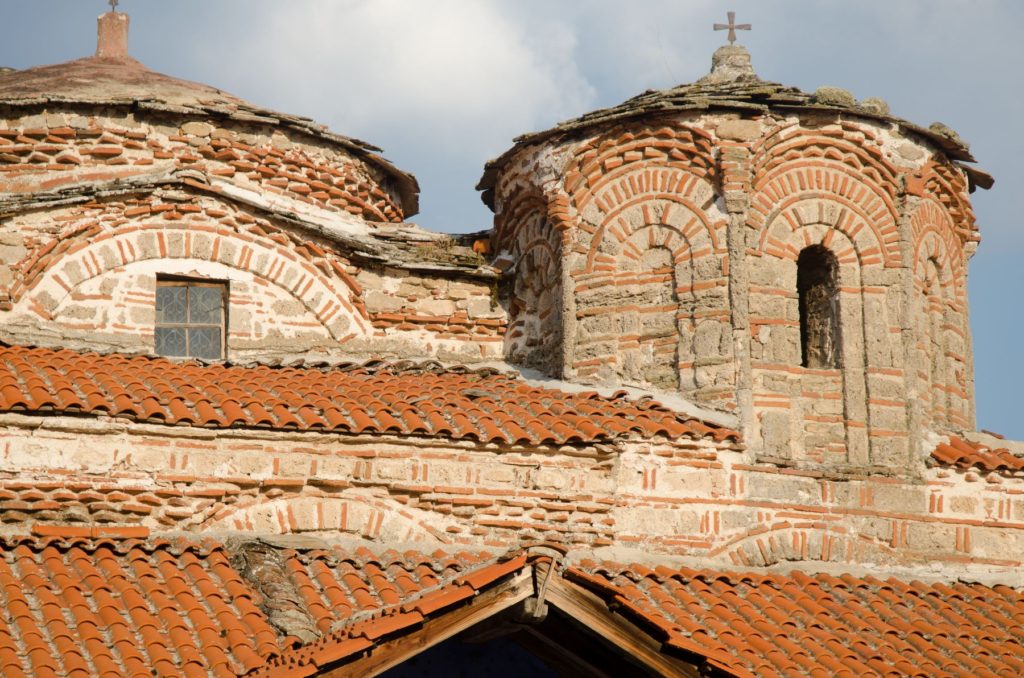
Despite its importance, the monastery is in urgent need of renovation. The
site is of such worth that it made the World Monument Fund’s 2006 top 100 most endangered sites. In addition to the value of the site itself, its remote setting is beautiful and earned itself a central role in Mančevski’s film Before the Rain.
San Pietro, Liguria, Italy
The 12th-century striped church of San Pietro sits on the craggy cliff at the end of Porto Venere as if guarding the entrance to the bay. The church is dedicated to the patron saint of fishermen, St Peter, and parts of it date from the 6th century. There are fabulous vistas from here back across the bay, while the church’s beautifully simple striped interior makes it one of the prettiest churches in Liguria.
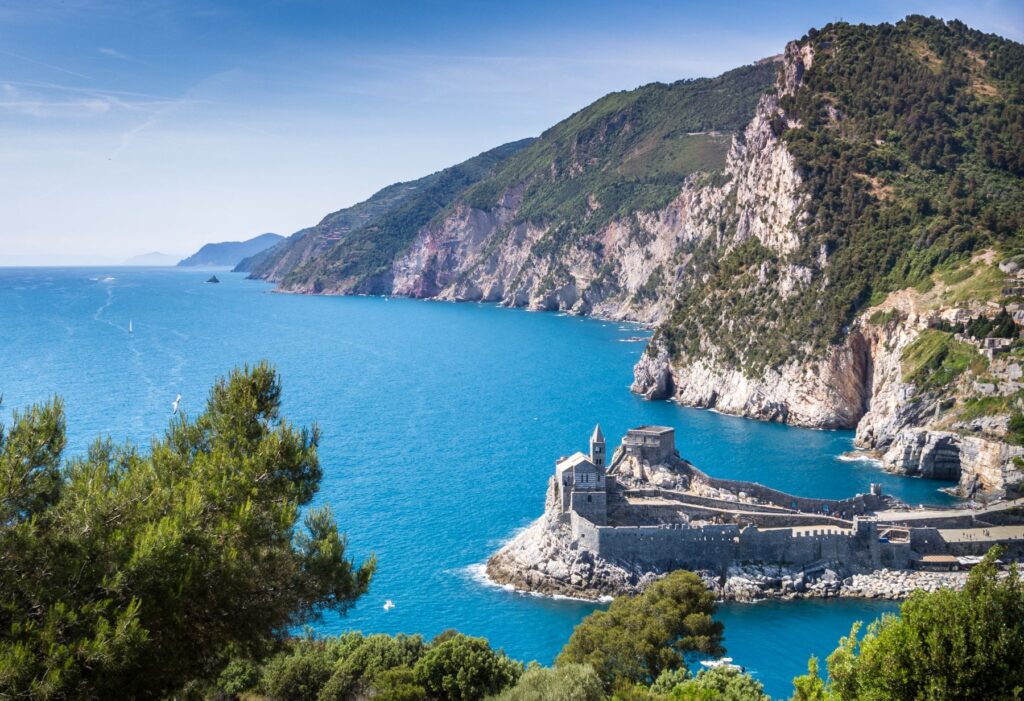
Just before the church is the entrance to the Grotta Arpaia where the poet Lord Byron used to recite poetry. The tiny cove inspired his poem, The Corsair. The actual grotto collapsed in the 1930s but the bay is still a lovely place to swim off the rocks.
Rila Monastery, Bulgaria
With a dramatic location in the Rila Mountains, UNESCO-listed Rila Monastery is one of Bulgaria‘s most popular tourist attractions. The first sight of the monastery’s towering exterior gives the impression of a fortress; in the past this security was necessary, as the wealth of the monastery attracted bandits, though its remote situation in the mountains and its altitude, 1,150m, helped to protect it.
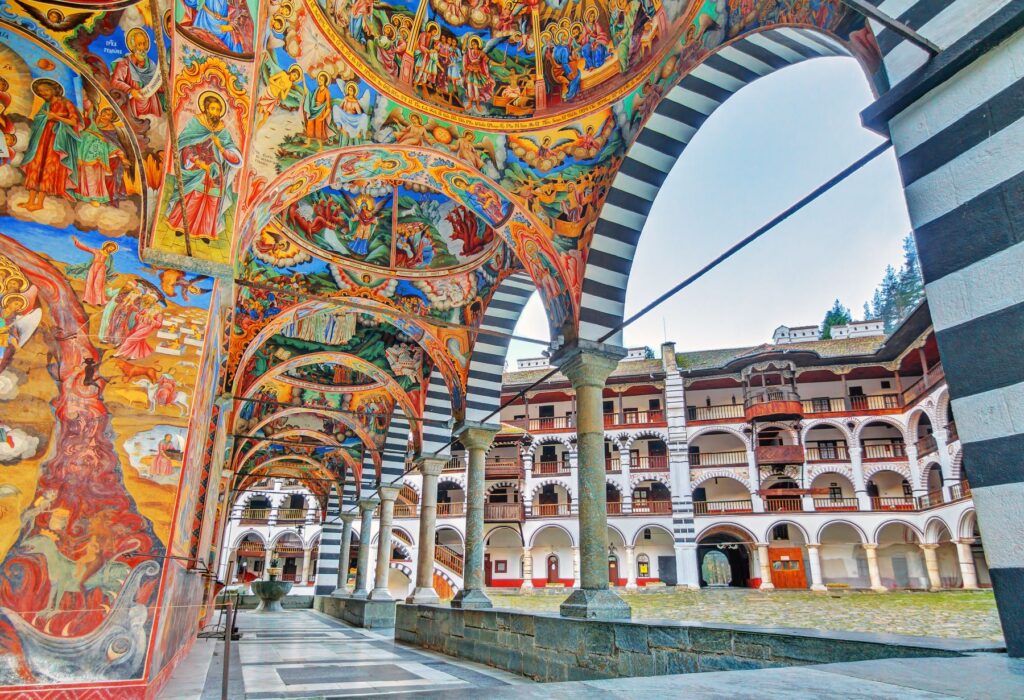
The monastery has occupied this location since 1335, a few kilometres southwest
of the original hermitage. The monastery suffered damage and destruction during the Ottoman conquest and the subsequent occupation, but after each setback renovation soon began again. After the great fire of 1833, the Ottoman sultan allowed the rebuilding of the monastery, and plentiful financial donations from the people, together with the gifts of time and skills by many great artists and craftsmen, resulted in the splendid building we see now.
Sanctuary of Ta’ Pinu, Gozo, Malta
The Sanctuary of Ta’ Pinu is Malta’s most important pilgrimage site with a remarkable collection of ex-voto offerings, testament to local belief in the intercession of the Madonna Ta’ Pinu. There has been a chapel on this site for centuries, which in 1575 was so old and derelict it was condemned. The story goes, however, that when the workman enlisted to demolish, his arm broke. This was taken as a divine signal and the chapel was saved.
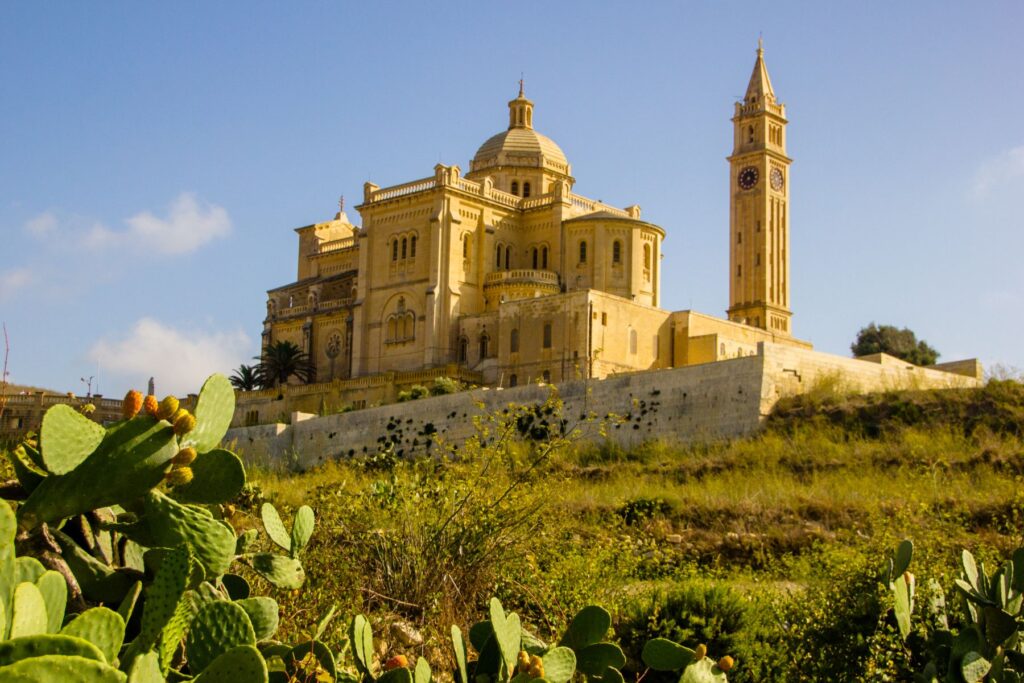
The chapel became so popular as a centre of pilgrimage and prayers for the sick, that in the 1920s a grand neoromanesque church was built in front of the old chapel, which is still intact behind the present altar. Pope John Paul II held Mass on its parvis (front terrace) during his visit to Gozo in 1990.
Hallgrímskirkja Church, Reykjavik, Island
The grey tower of Hallgrímskirkja, which was completed in 1974, defines the Reykjavík skyline in a most impressive way. At 245ft (74m) high, this is Iceland’s second-tallest building and the city’s most prominent landmark – you can see the church from a good 25km away. The church’s design has become a symbol of Reykjavík in its own right: an ancient theme that honours a past hero by invoking nature with modernism.
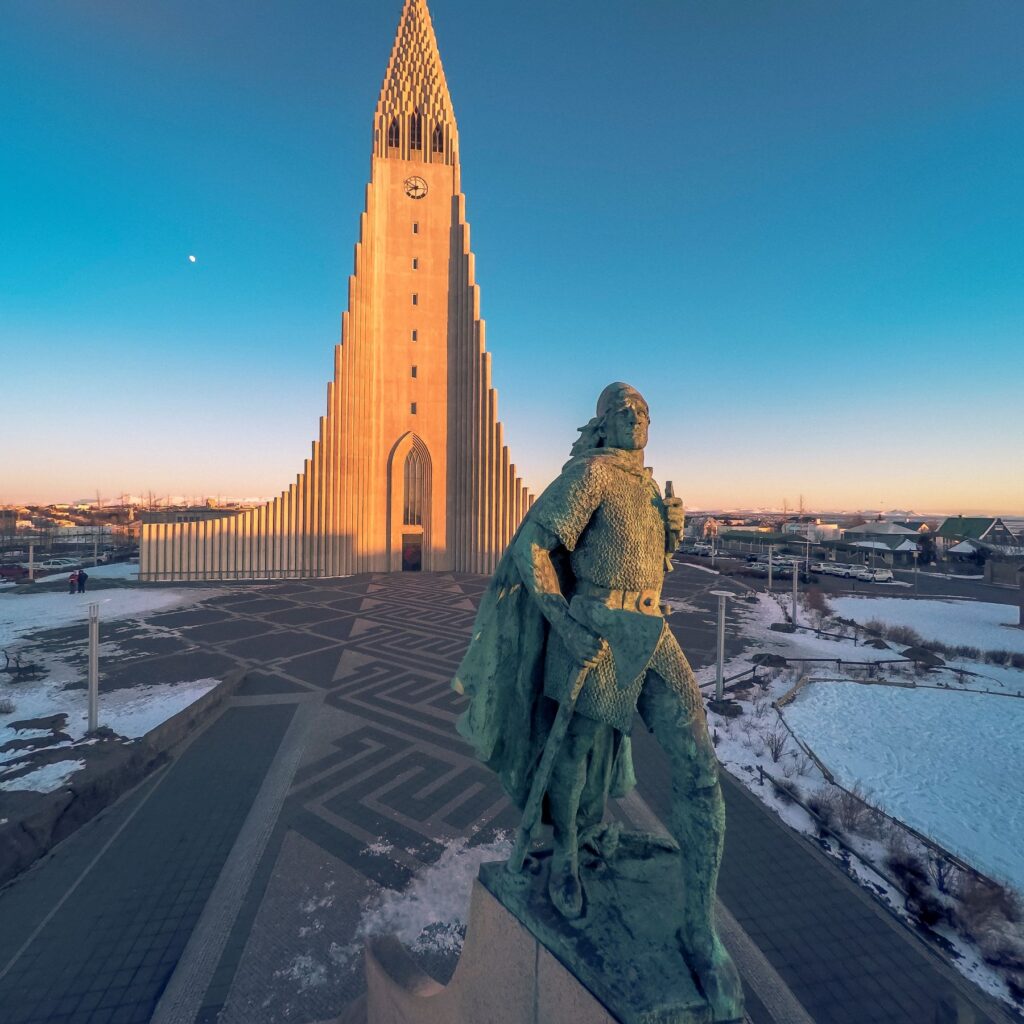
The bold structure honours Hallgrímur Petursson, the country’s famous post-Reformation reverend and a man who authored so many classical Icelandic hymns. It is the most well-known work of Guðjon Samúelsson, who designed so many buildings in what is now a telltale Reykjavík style. What is different is the tower’s almost parabolic shape, built to mimic the crystallised columns of basalt formed by cooling lava – a feature seen throughout Iceland.
Alexander Nevsky Cathedral, Tallinn, Estonia
Entering the cathedral represents a symbolic departure from Estonia. It is a Russian architectural outpost dominating the Tallinn skyline and was built between 1894 and 1900, at a time when the Russian Empire was determined to stifle the burgeoning nationalistic movements in Estonia. It was provocatively named after Alexander Nevsky, since he had conquered much of Estonia in the late 13th century.
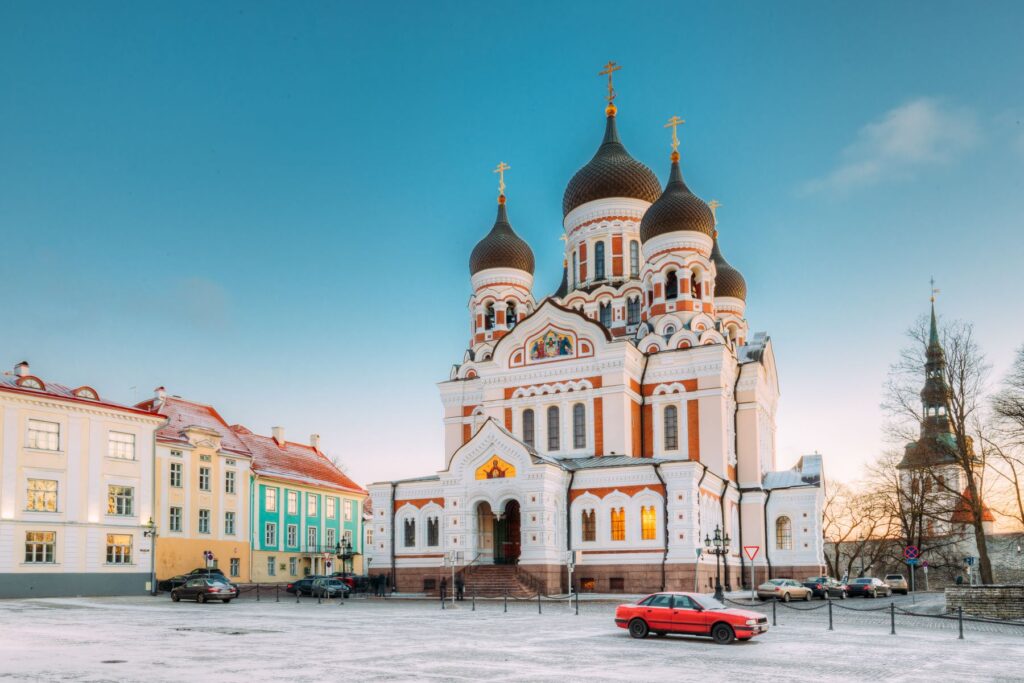
Occasionally plans are discussed, as they were in the 1930s, for the removal of the cathedral as it is so architecturally and politically incompatible with everything else in Toompea, but it is unlikely that any government would risk the inevitable hostility that would arise amongst the Russian-speaking population of Tallinn.
Church of St Elizabeth (Blue Church), Bratislava, Slovakia
St Elizabeth’s Church is a stunning example of Art Nouveau architecture and, with its light blue ‘icing’ and decorative elements, is considered the most beautiful church in Bratislava. According to legend, Elizabeth, the daughter of Endre II of Hungary, was born in Bratislava in 1207 and was the city’s only well-known saint. It was decided that a church be built in her honour and the Hungarian architect and ‘father of Hungarian Art Nouveau’ Ödön Lechner was commissioned to design a church in 1907, on the 700th anniversary of Elizabeth’s birth.
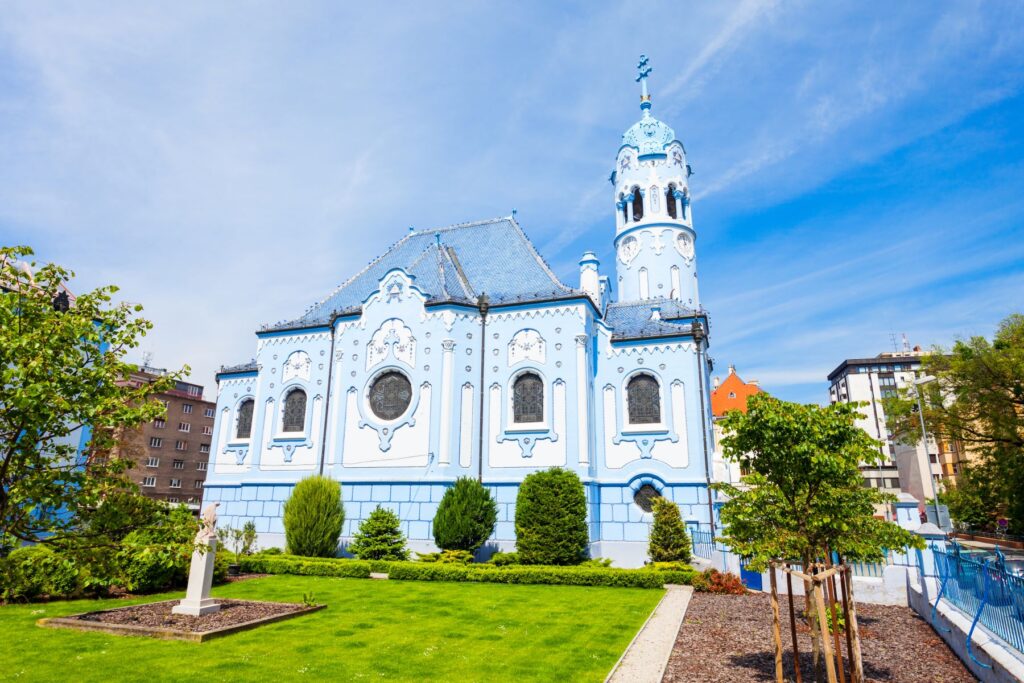
Lechner used concrete for the church and covered the exterior with plaster painted in several shades of blue, decorated with ceramic floral tiles in darker blue.
Cathedral of St Sophia, Polotsk, Belarus
Situated in an elevated position in Polotsk, this glorious cathedral, built
between 1044 and 1066, was a direct rival of those bearing the same name in Novgorod and Kiev.
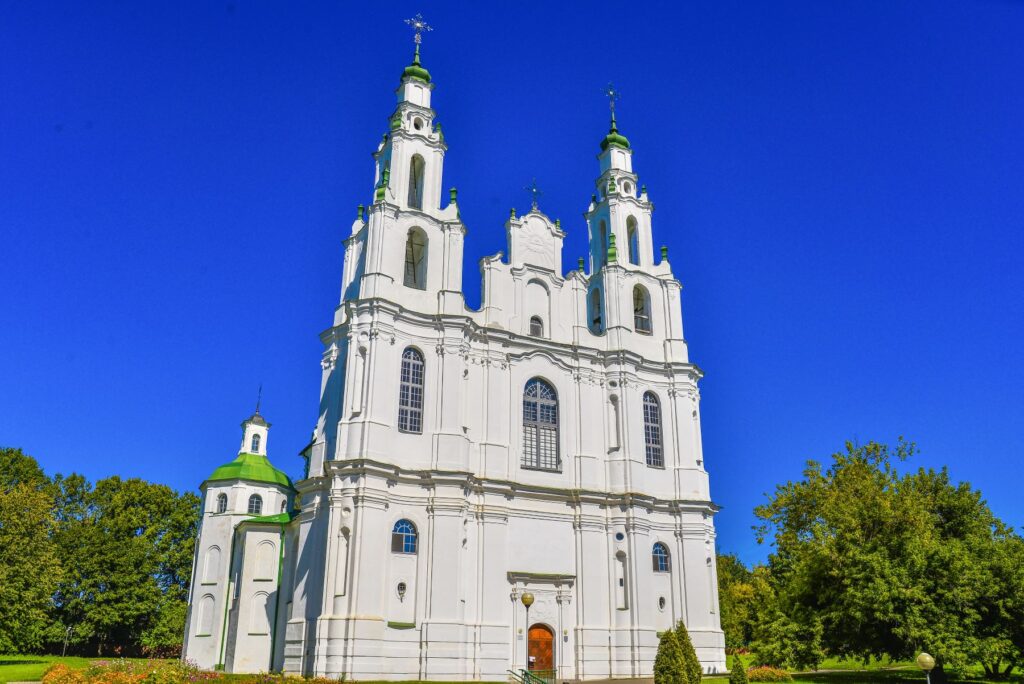
On the orders of Tsar Peter the Great it was blown up by retreating Russian forces in 1710, before being rebuilt by the Poles between 1738 and 1750 as a Baroque Roman Catholic cathedral. Today, only the eastern elevation and some of the basement walls are the originals, but when first built its seven towers must have been a particularly imposing sight.
More information
Discover more incredible churches with some of our European guides:
